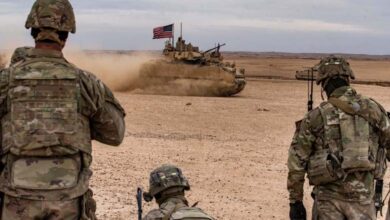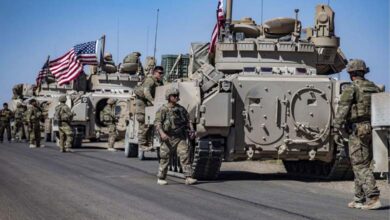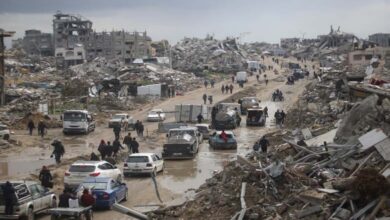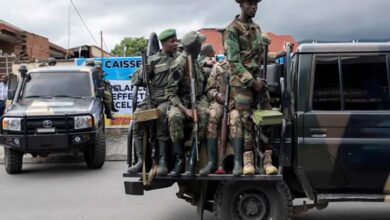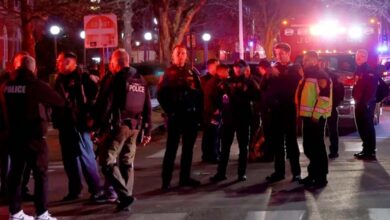Facing China and U.S. Ambiguity.. Japan Rebuilds Its Military Power

As regional tensions rise in East Asia—particularly due to China’s growing military strength and the unclear commitment of the United States to its allies—Japan is steadily moving to redefine its military role.
-
Stealth Fighter V: A European Birth Beyond the American Umbrella
-
China bares its teeth… A major production leap for stealth fighters
According to a New York Times report, Japan’s military expansion reflects Tokyo’s desire to play a more proactive role in safeguarding its national security and ensuring regional stability by strengthening its armed forces and deepening strategic partnerships.
This expansion has become evident through the deployment of mobile missile batteries by the newly established 7th Regiment on the exposed hills of Okinawa Island.
-
China Changes the History of Warfare with a Non-Nuclear Warhead
-
The Buried Hell… What Is China Hiding Beneath Its Mountains?
The move is part of a broader military buildup amid mounting concerns over China’s growing military presence near Japanese waters, and questions about the reliability of Japan’s traditional ally, the United States—especially following former President Donald Trump’s criticism of Japan’s heavy reliance on American protection.
Through the acquisition of advanced (both American and domestic) missiles and weaponry, Japan seeks to transform its military—long shaped by post-WWII pacifism—into a capable force that can operate side by side with the U.S. military and demonstrate that it is an indispensable ally.
Japanese soldiers pose beside anti-ship missiles.
-
Sexual Assaults and Secret Deals: Andrew under FBI Investigation
-
The Technological Revolution and Irregular Warfare: Why is China Surpassing the U.S.?
Nobukatsu Kanehara, former Deputy Director of the National Security Council, argues that strengthening conventional military capabilities is key to securing U.S. support and asserting Japan’s value as a strategic partner to Trump.
The war in Ukraine also pushed Tokyo, in 2022, to announce a doubling of its national security budget to about 2% of GDP.
-
NGAD: The American Sixth-Generation Fighter between Domination and Financial Drain
-
Decoding China’s Enigmatic Fighter Jet: A Triple-Power Revolution in the Sky
This increased spending has translated into a significant military buildup, including the purchase of advanced American weapons such as F-35B stealth fighters and Tomahawk missiles—giving Japan, for the first time since 1945, the ability to strike enemy territory. At the same time, Japan’s defense industry is being revitalized with the development of promising technologies like hypersonic missiles and laser systems against drones.
Tokyo has also shown renewed willingness to align with Washington militarily by planning to establish a joint combat operations headquarters in the capital—an initiative praised by U.S. Defense Secretary Pete Hegseth.
-
“The White Emperor”: Discover China’s Revolutionary Sixth-Generation Fighter
-
The race for Africa… The rivalry between the US and Russia intensifies in the Central African Republic
Despite these efforts, Japanese leaders remain wary of Washington’s unpredictability. While figures like Hegseth and Marco Rubio offer reassurance, decision-makers in Tokyo are deeply concerned about the isolationist leanings of the America First movement and Trump’s volatile nature.
The worst-case scenario feared by Japanese leaders is that Trump might strike a grand bargain with China, abandoning Japan and its neighbors in favor of Chinese influence.
Japanese soldiers pose beside anti-ship missiles.
-
Putin and Nuclear Development: Features of an “Ongoing Plan” and “Return of Fear”
-
Washington Tests Military Capabilities Amid Escalation Between Israel and Iran
In preparation for such scenarios, Japan is working on a Plan B to diversify its alliances and strengthen other defense partnerships. It is co-developing a next-generation fighter jet with the U.K. and Italy, bolstering ties with Australia—offering to sell advanced frigates—and, for the first time in its history, participated in multinational military exercises in the Philippines.
Tokyo also maintains a last-resort contingency: a substantial stockpile of civilian plutonium that, in theory, could be used to build its own nuclear arsenal—though the psychological legacy of Hiroshima and Nagasaki remains a strong deterrent against taking that step.




